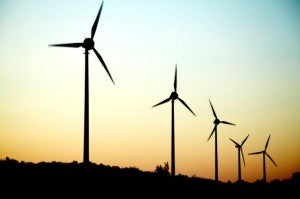
- 2015 Climate Corps fellow Phoebe Romero and her supervisor sitting near a solar-powered phone charging station on the Huston-Tillotson campus.
We are nearing the end of another successful season of EDF Climate Corps, the 8-year-old program run by the Environmental Defense Fund (EDF) that “embeds” grad students inside companies to find ways to save energy and money and lower carbon emissions.
Over the course of its history, EDF Climate Corps has developed into something of powerhouse from both sides of the energy sector: enterprising students (called “fellows”) discover a passion for sustainability through the act of finding efficiencies in the energy systems of their host organizations, and the hosts benefit from these energy savings while jumpstarting or contributing to their sustainability goals.
This year, 12 Texas companies and public sector entities hosted fellows, and this got us to thinking, what kind of evolution and impact has the Climate Corps program had in Texas over the years? We decided it was worth a closer look and turns out, fellows have been saving Texas schools, businesses, and other organizations a lot of energy – and a lot of money.














 Cowboys, frontier grit, accented English, and wild, wide open spaces are just a few of the similarities shared by Texas and Australia. Both places also have an energy-water problem. But, the good news for Texas is that it’s not too late for us to learn from Australia’s mistakes – and a few successes, too.
Cowboys, frontier grit, accented English, and wild, wide open spaces are just a few of the similarities shared by Texas and Australia. Both places also have an energy-water problem. But, the good news for Texas is that it’s not too late for us to learn from Australia’s mistakes – and a few successes, too.